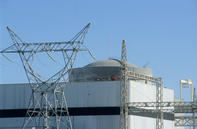Africa's First Nuclear Power Station
Research found that the first inhabitants of the West Coast region were the San people, and Melkbosstrand is no exception. The Dutch East India Company established the farmhouse Melkbosch just outside of town, and the settlement grew rapidly during the 20th century.

An example of early architecture is the Damhuis cottage, which was built in the late 18th century and now serves as a beach restaurant. The town is named after the species of Euphorbiaceae bushes which grow on the dunes and give off a milky latex like substance, and locals simply refer to the town as Melkbos.
Melkbosstrand is the site of the infamous Battle of Blaauwberg which occured in 1806, whereby the Cape ceased to be occupied by French-Batavian troops and became a Colony of the British Crown. A cannon set on a koppie on Melkbosstrand foreshore commemorates the battle itself. Numerous shipwrecks, some dating back to the Portuguese Discoverers of the Early Renaissance, are strewn along the coast of the town.
In 1976, Koeberg Nuclear Power Station was built just outside of Melkbosstrand. It was constructed with the help of the British and French. It is the first ever power station to be built in the country and on the continent of Africa. Koeberg ensures a reliable supply of electricity to the Western Cape. It is surrounded by a 3 000 ha nature reserve owned by Eskom, containing more than 150 different species of birds and half a dozen small mammal species.